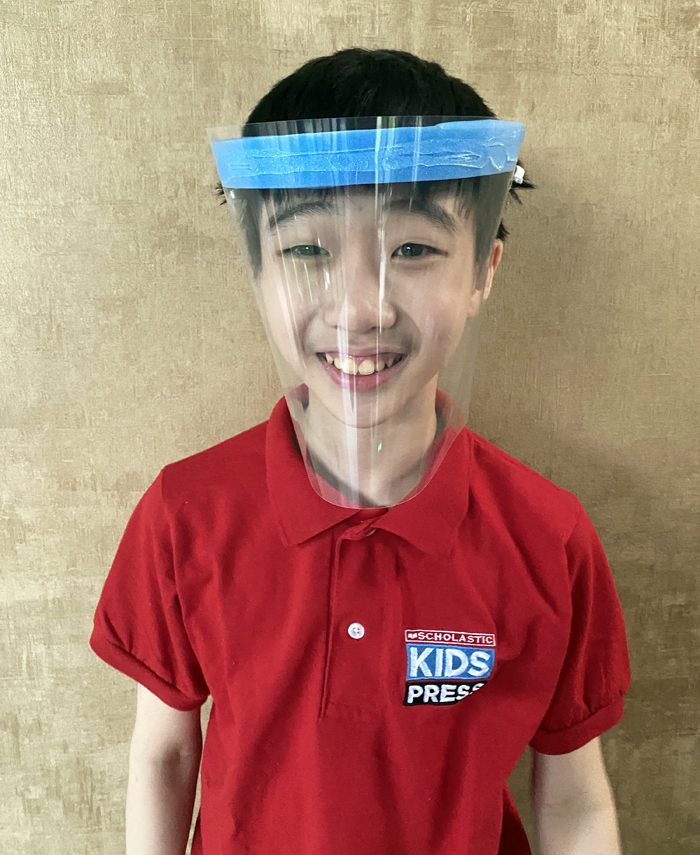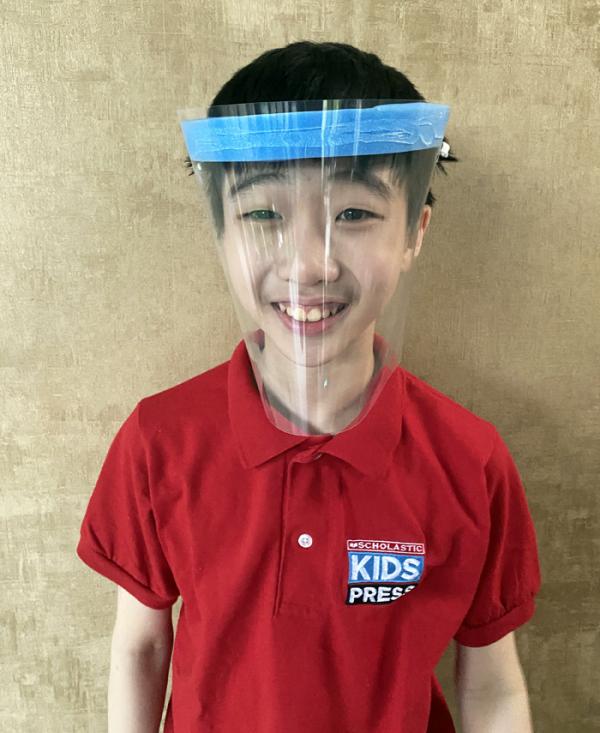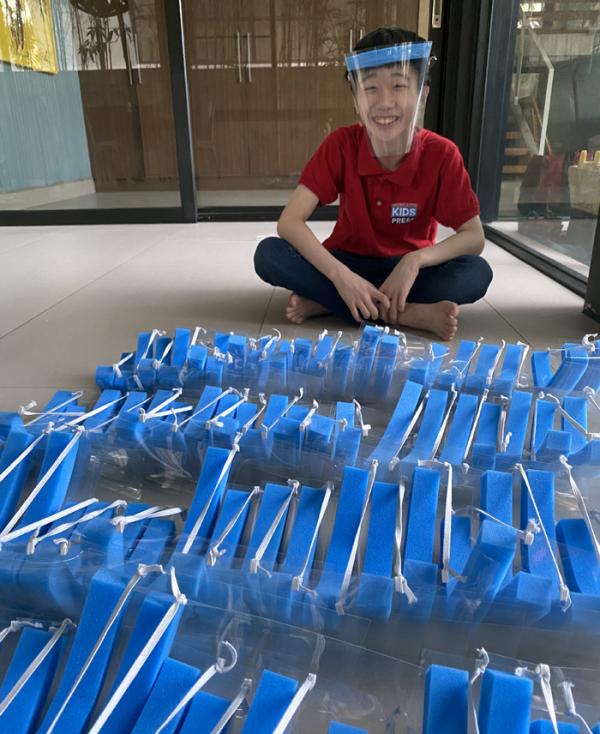KID REPORTERS’ NOTEBOOK
Eyewitness: Coping With the Pandemic in the Philippines


Colin, who lives in Metro Manila, has been making plastic masks for healthcare workers in the Philippines.
Editor’s note: During the coronavirus pandemic, our 50 Kid Reporters around the world are covering the news from home. We’ll be sharing their individual experiences on our Kids Press blog in the weeks ahead. Stay safe!
At of the time of this writing, there are nearly 3,000 cases of COVID-19 in the Philippines, where I live. On March 16, President Rodrigo Duterte declared a quarantine for Luzon, the country’s largest and most populous island, due to the coronavirus pandemic. This affects roughly 50 million people.
The Philippines is one of the first developing countries to establish such a strict lockdown. My family is lucky to have the things we need, but many people are about to run out of food because they're not earning any money. All businesses are closed, as is public transportation. Only essential workers can leave their homes. Police officers at checkpoints ensure compliance.
My parents, my three younger brothers, and I have been home for two weeks. Children are not allowed to go outdoors at all. It is difficult to be inside, but we can play games and get food delivered. School has not been affected so far since we kids are on summer break until June.
HELPING OUT
How can people help during the coronavirus pandemic? Many are donating money and supplies to ease the burdens on frontline workers.
Anton Gonzalez, a business owner in the Philippines, is donating money so that healthcare workers and first responders can buy food. “There are tens of millions of people who need our help,” he said.
Patxi Elizalde, another business owner, is managing logistics to deliver meals to doctors and nurses in various hospitals in Metro Manila.

Colin with the masks he made at home
STAY HOME
People are also donating medical supplies to hospitals so that patients and medical professionals can be safer. One nonprofit organization, for example, is funding entrepreneurs who can provide crucial life-saving equipment, especially ventilators, to hospitals.
Individuals can help by making personal protective equipment (PPE) for healthcare workers and first responders. Even kids at home can make them. Parents at my school purchased materials online to enable students to make plastic masks, which go to hospitals and other facilities treating patients with COVID-19.
Last, but not least, the easiest way we can help others is by staying home. This is underrated but very important. It will help slow the spread of the virus. Little things like these, including washing our hands frequently, can really make a difference.
